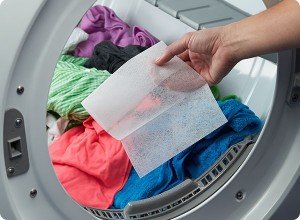Five toxic holiday gifts you should never buy a loved one for Christmas
4 min read
Gift-giving is a wonderful activity, but many people who give gifts to family and friends don’t realize they’re actually giving the recipient cancer, or diabetes or attention-deficit problems.
In this article, I expose five dangerous gifts that may literally increase the risk of disease and death. Whatever you give your family and friends this holiday season, please avoid giving these five dangerous gifts:
Dangerous gift #1) Perfumes and colognes (promote cancer)
A typical perfume product contains over 20 cancer-causing chemicals, and they’re absorbed right through the skin. Perfumes and colognes — or any fragrance product, for that matter – are direct causes of cancer which remain utterly ignored by the cancer industry (that just happens to be more interested in high-profit treatments rather than profit-destroying prevention strategies).
The only “safe” perfume is one made entirely from essential oils. Legally speaking, nearly all perfumes sold in the state of California should be labeled with cancer warnings under Proposition 65, but the state never enforces this law against giant perfume corporations (interesting, huh?).
Dangerous gift #2) Processed meats, hams and sausages (promote cancer and diabetes)
You see these heavily promoted during the holiday season: Sausages, hams and other specialty meats, usually sold with natural-sounding language to make them appear wholesome and home-grown. In reality, almost 100% of these meats contains odium nitrite, a dangerous cancer-causing chemical that’s used to turn these meats red and prevent spoilage by killing living organisms.
Sodium nitrite is linked to both an increase in cancer as well as type-2 diabetes due to harmful effects on the pancreas. The USDA once tried to ban sodium nitrite from the food supply in the 1970’s but was overruled by the meat industry (which now basically runs the USDA). While processed holiday meats might be a very effective gift to give someone you wanted to murder, they are simply not appropriate to give to someone you care for.
Dangerous gift #3) Video game consoles (promote violence)
Parents, if you’re about to buy video games for your kids, please reconsider your decision. Video game consoles now feature game content that’s more graphic and violent than ever, and theydesensitize your childrento acts of violence.
Even worse, some video games being designed today — “first-person shooters” — are actually developed by the U.S. military and used as recruiting tools that aggrandize war. A young male child who plays video games is not only more like to join the military and engage in mindless acts of violence, he is also more likely to be diagnosed with attention deficit disorder.
There are some very good real-time strategy games that teach strategic thinking (such as Sid Meier’s Civilization series), but avoid giving your children first-person shooters or other extremely violent games.
Dangerous gift #4) Mobile phones (promote type-3 diabetes)
Very few people know that there’s another kind of diabetes called “type-3 diabetes.” It’s caused by electropollution. Quite literally, when some people are in the presence of strong electromagnetic fields, their blood sugar levels begin to swing wildly. (http://www.naturalnews.com/028967_e…)
Mobile phones are one of the worst sources of electromagnetic pollution beamedright through your head. It’s far safer to use them with a bluetooth headset, and safer still to use them only as a texting device without voice calling. (The small bursts of text data transfer are miniscule compared to full-on voice broadcast.)
If you do want to give someone a mobile phone, make sure they’re not already diabetic (and buy them a bluetooth headset).
Dangerous gift #5) Clothing that’s full of GMOs, dyes and pesticides
This is a tough one, but nearly all the clothing sold in stores today is absolutely loaded with GMOs, dyes and pesticides. Let me explain: Any clothing containing cotton is almost certainly GMO, as virtually all the cotton grown in America today is genetically modified. Of course, you’re not eating that pair of jeans, so this may not concern you personally, but there’s still a huge environmental impact of GMO cotton being grown on farms.
Far worse from a personal health perspective are the dyes. Clothing dyes are almost always toxic, cancer-causing chemicals, and if you’ve ever worn a new piece of clothing and later discovered some of the dye rubbed off on your arms or legs, you know how easily these dyes can transfer from the clothing to your skin (and then into your bloodstream).
Finally, all non-organic cotton is loaded with pesticides, and those pesticide chemicals can promote Parkinson’s disease, dementia and other brain disorders (http://www.naturalnews.com/027098_p…). The only cotton that’s free of pesticides is100% organic cotton, which is available from a few specialty stores and online retailers.
SAFETY TIP:If you do buy someone a gift of clothing, or if you receive one yourself, wash the clothes in hot water(by themselves, without polluting your other clothing) and use an extra rinse cycle. Dry them in the dryer and then wash them again! This is the only way to remove most of the dyes and pesticides found in these clothes, and even this process doesn’t remove all the dangerous chemicals.
Be smart this holiday season – don’t destroy the health of those you love
Whatever you give people this holiday season, be smart and consider the following:
- WHERE does this gift come from? What is its resource and manufacturing impact on the environment?
- WHO profits from me buying this gift? Does it enrich some evil corporation?
- WHAT will be the impact on the person I’m giving this gift to? Will it improve their live in a meaningful way?
The more you consider these questions, the better your gift-giving success will be… and not just at a personal level, but at a global level where you are fully aware of the global impacts of your purchasing and gift-giving decisions.
Learn more:http://www.naturalnews.com/034253_Christmas_gifts_toxic_chemicals.html#ixzz1f1AkDBLa






